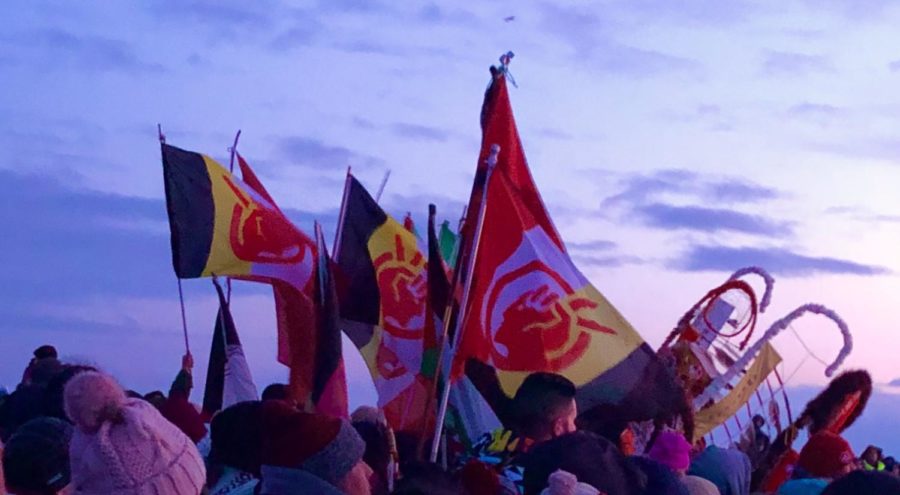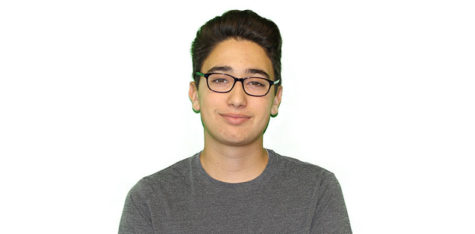While most of the Bay Area was fast asleep, looking forward to the turkey feast they would indulge in, a quarter-mile-long line stretched past Pier 33 to buy tickets for a ferry ride out to the middle of the Bay.
By 5 a.m. on Nov. 28, thousands of people gathered on Alcatraz Island. However, they weren’t there to tour the historic prison or see the stunning city skyline.
The majority of them were Native Americans from dozens of tribes across North and South America. For over four hours, spectators gathered in a circle to watch dancers — some only wearing boxer underwear — in 36-degree weather and on and off rain.
This was the famous Sunrise Ceremony, an indigenous prayer event that holds a special place in Native American history.
After over an hour and a half of passionate dancing and prayer from over a dozen different tribes, longtime indigenous activist Bradley Davis spoke, emphasizing the importance of being thankful.
“We’re so honored to have another day of life and to be able to enjoy each other,” Davis said.
Davis was quick to remind everyone about what had to happen for everyone to enjoy these peaceful moments.
“We will never forget those who laid it on the line and got arrested and beaten by authorities for protesting against the inequality that still exists for our people,” Davis said. “In this instance, we were battling the Pacific Gas and Electric (PG&E) because they were using our land and wanted more to make more money.”
Several other high-profile activists from the American Indian Movement (AIM) were on the island, including Bill Means. Means worked with his brother Russel to unite indigenous people throughout the entire country to fight at the historic Battle of Wounded Knee.
Means talked about the importance of the work he has accomplished over the last 50 years.
“This is a spiritual journey,” Means said. “My grandfather started this journey, and I continued it for my entire life. I am an elder now, and I know the youth will continue this journey.”
Means made it clear that the struggle he and his comrades, including political prisoner Leonard Peltier and the late Dennis Banks, went through was essential to the livelihood of all native people, and it would not be forgotten.
“These people made a sacrifice. Some are gone, some are still here,” Means said.
But indigenous rights weren’t the only rights activists were fighting for. Nearly every speaker spread the message of fighting for equality for all people of color. The ceremony attracted various supporters, including NFL player Colin Kaepernick and actor Danny Glover.
For years, organizers emphasized fighting for the human rights and liberation of Palestinians. Attendee Yousef Sarsour proudly waved the Palestinian flag throughout the entire event.
“It’s important to show understanding and mutual respect for both cultures,” Sarsour said. “I do this as a tradition because I had a Naive American friend who knew more about Palestinian issues than I did. One day, he invited me here, and they really welcomed me into their community.”
But the Sunrise Ceremony didn’t get this much attention from non-indigenous people until recently. Its origin was not as a day of mourning but from the 19 monthlong occupation of Alcatraz in 1969.
Cultural leader Phil Albers believes that some of the same rights and resources people fought for back then were not given to any tribe now.
“Our families are struggling to survive in these conditions of oppression. The best way to change that is to reconnect with our waters, our lands, and our ancestors. To do all that, we have to remain strong in our ways and our respect for our elders,” Alberts said. “We are warriors!”
Although commemorating the work of activists and mourning the past were the main themes of the gathering, several speakers shared their positive outlooks for the future.
Inspired by the presence of youth, Alberts spoke about what it meant for the struggle to be carried on.
“We must remember the wisdom of our ancestors and ensure that we pass that on to our youth. We must pass down this knowledge to our future generations so they can gather food and materials with that 1000-year-old knowledge. We pass this knowledge on so that they can stand high on a mountain and pray without a giant telescope being there,” Alberts said. “You youth are here. You are the future, and you will carry on our legacy.”
























Shoshana Dembitz • Dec 3, 2019 at 11:34 pm
Beautiful job of reporting and perfect dramatic illustration. Bravo, Khalid!